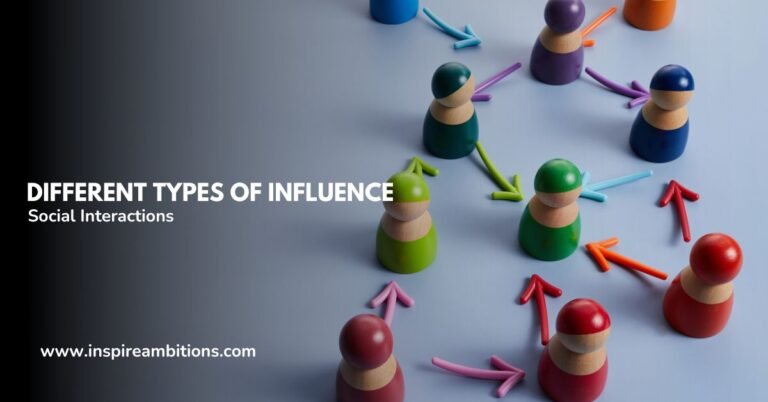Técnicas de comunicação não verbal – como se comunicar de maneira eficaz sem palavras
Understanding the intricacies of nonverbal communication can profoundly influence your personal and professional relationships. It’s the subtleties—facial expressions, gestures, and posture—that speak volumes beyond words.
These silent signals can convey trust, deceit, sincerity, or anxiety, often dictating the tone of our interactions before a single word is spoken.
The dance of communication is an intricate blend of verbal and nonverbal cues. While you might be focusing on what to say next, it’s essential to be aware that your body could be telling a different story.
This awareness is crucial across various cultures because a friendly gesture in one may be a rude one in another. Keeping an eye on these nuances can not only enhance your communication skills but also build stronger, more empathetic connections with others.
To navigate the world of nonverbal cues effectively, imagine you’re learning a new language—one where you communicate confidence, empathy, and engagement without uttering a word. Whether it’s in a business meeting or a personal encounter, being adept at reading and conveying these signals can set the stage for more meaningful and successful interactions.
Fundamentals of Nonverbal Communication
Nonverbal communication encompasses a vast array of ways we convey messages beyond words, from the subtleties of expressões faciais to the assertive language of posture.
Defining Nonverbal Communication
Nonverbal communication involves the various methods of sending and receiving messages without the use of spoken words. It is universal because, regardless of language or culture, we all use facial expressions, eye contact, and body language to communicate.
These cues can complement or substitute for verbal communication. For instance, a smile can reinforce a complimentary verbal message, or a firm handshake can substitute for a greeting when words are not appropriate.
The Symbiosis of Verbal and Nonverbal Communication
Verbal and nonverbal communication are deeply intertwined. Nonverbal behaviours can accent, repeat, contradict, regulate, or substitute verbal messages. An excited tone of voice, for example, can add emphasis to a positive verbal message, and averted eye contact might reveal discomfort or disagreement despite affirming words.
Types and Functions of Nonverbal Communication
Nonverbal communication is multifaceted, comprising various types that serve distinct functions:
- Kinesics (Body language): Includes facial expressions, gestures, and posture. It can reveal feelings and attitudes.
- Haptics (Touch): Can communicate support, affection, or power dynamics.
- Proxemics (Space): Refers to personal space and how its use affects communication.
- Vocalics (Tone of voice): Conveys emotions and clarifies message intent.
- Chronemics (Time): Illustrates values and priorities, such as punctuality.
Each type serves to regulate conversations, manage impressions, convey intimacy, and express emotions. Together, they build a full picture of interpersonal communication, rounding out the words we say with a depth of unspoken context. Remember, it’s not just what you say; it’s how you say it and the nonverbal signals you send that can create the most significant impact.
Nonverbal Communication in Human Interactions
Nonverbal communication enriches the way we connect, and the unspoken elements often speak the loudest in our interactions.
Cultural Variations and Universals
You’ve probably heard the saying, “Actions speak louder than words,” and that’s especially true when you consider the vast array of nonverbal cues across different cultures. For instance, emblems used in one culture, like a thumbs-up, might carry a very different meaning in another.
Yet, some aspects of nonverbal communication, like facial expressions for happiness or sadness, seem to be universal. It’s essential to navigate these differences to avoid misunderstandings during social interactions, especially in negócios, where a gesture out of place can mean a deal out of hand.
The Role of Nonverbal Communication in Building Trust and Rapport
Imagine you are consulting with a therapist or discussing a vital deal, and your counterpart maintains good eye contact, nods appropriately, and leans in slightly. These are all signs of active listening and reflect genuine interest. Such behaviours play a pivotal role in establishing confiar e relacionamento.
Salespeople harness the power of mirroring body language to create a sense of empathy, which is critical in making you feel understood and at ease.
Nonverbal Communication Across Different Settings
Different settings require varying levels of formality and types of nonverbal communication. In a law enforcement setting, officers might use their stance to project autoridade and maintain control.
On the other hand, someone flirting might use subtle gestures such as a quick eyebrow flash or an accidental touch to signal attraction. Even in the absence of words, our nonverbal cues are tirelessly at work, conveying messages about our intentions, feelings, and the dynamics of our interpersonal relationships.
Keep these insights in mind the next time you find yourself wrapped up in conversations, and remember that often, it’s not just what you say, and it’s how you say it—with your whole body.







